Budapest – the most interesting attractions, TOP 10
Budapest is a very picturesque city by the Danube river. It was created by combining Buda and Óbuda (right-bank part) and Pest (left-bank part). Currently, sightseeing cruises are very popular, which allow you to see the most important attractions of the Hungarian capital from a completely different perspective. So what is worth seeing in Budapest?
1. Parliament
The characteristic shape of the parliament is probably well-known by everyone, even if they have never been to Budapest. Built for the 1000th anniversary of the Hungarian state, the works were completed in 1904. Parliament is a real symbol of the city immortalized on postcards, a distinguishing point in the panorama. It is worth walking around it, but also admiring it from the opposite side of the Danube. From there, the view is breathtaking, the parliament can be captured in its entirety in the photo. It looks especially beautiful during sunset. It is also worth visiting its interior with a guide. The ticket price is 3500 HUF (about 9.75 EUR), you can buy them online or at the ticket offices. Entries are every hour on the hour, between 9:00 and 16:00, all week.
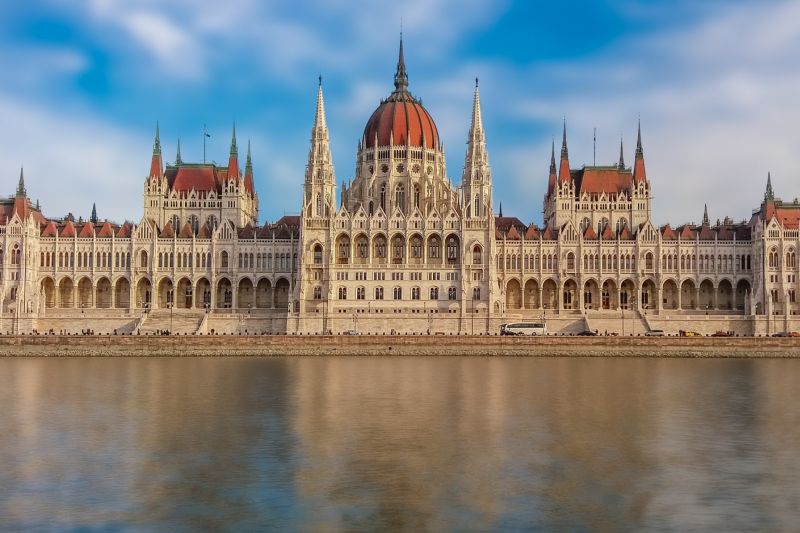
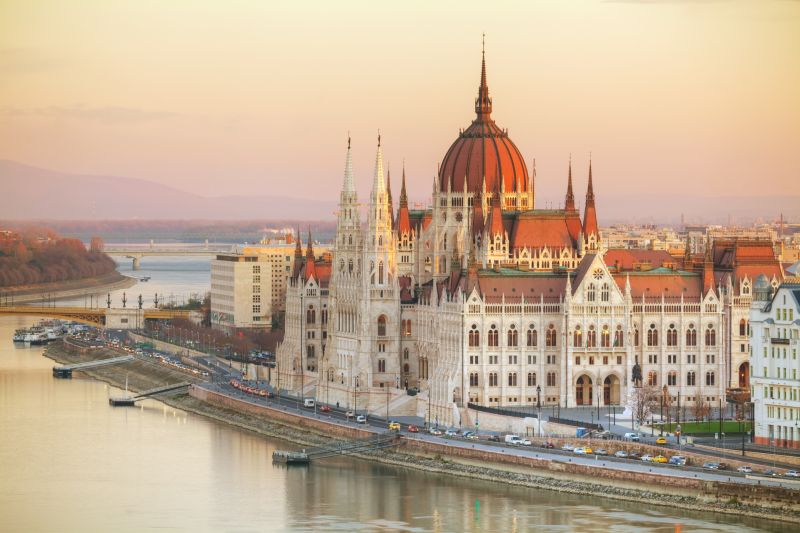
2. Castle Hill: Buda Castle, Fisherman’s Bastion, and Saint Matthias Church
The Castle Hill in Budapest is fully inscribed on the UNESCO list. The area is incredibly charming: narrow, medieval streets, cafes, and remarkable monuments. It is worth spending a few hours here. The area is so large that, although we will meet a lot of tourists at the most popular attractions, we will also find alleys where we can get lost while enjoying the peaceful atmosphere. We can get to the hill on foot and by a funicular that runs regularly from the vicinity of the Chain Bridge. Among the most characteristic buildings are:
- Buda Castle – proudly rises on a hill dominating the panorama of Buda (right-bank part of the city). The currently standing building was rebuilt after World War II, therefore we will not visit any of the original interiors of the royal apartments. It houses the Budapest History Museum and the Hungarian National Gallery. We can walk around the castle courtyard for free, admire the panorama from the vantage point, approach the Fountain of King Matthias (showing King Matthias Corvinus hunting).
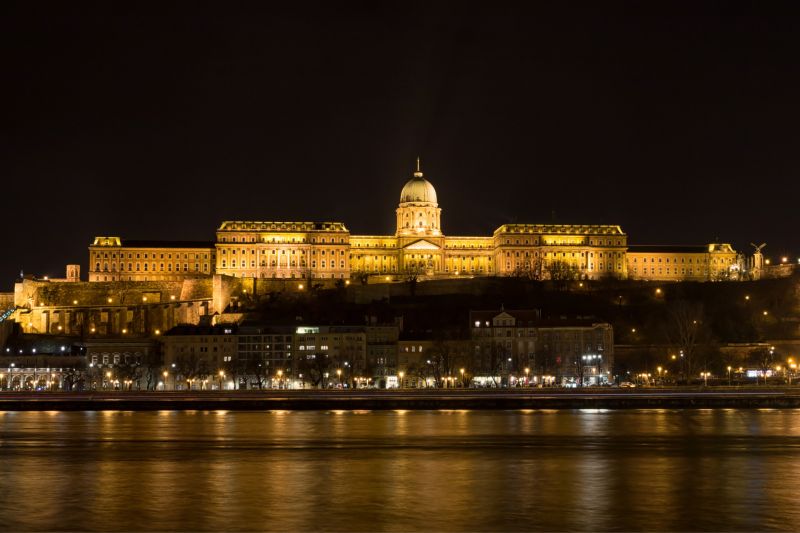
- Castle Garden Bazaar – if you need a moment of rest from the heat among greenery, it is worth going to this recently refreshed and reconstructed garden complex. It is located at the foot of the castle. If you don’t feel like walking, you can also go down to it by a comfortable elevator.
- Fisherman’s Bastion – one of the most romantic and photogenic places in Budapest. Both during the day and after dark, we will meet many couples in love here, there are wedding sessions, and you can also have a snack at the bistro. The architecture of the building is like a fairy tale. The lower terraces are free of charge, entrance to the higher terraces is payable. It is worth entering every alley because sometimes it reveals a completely different panorama.
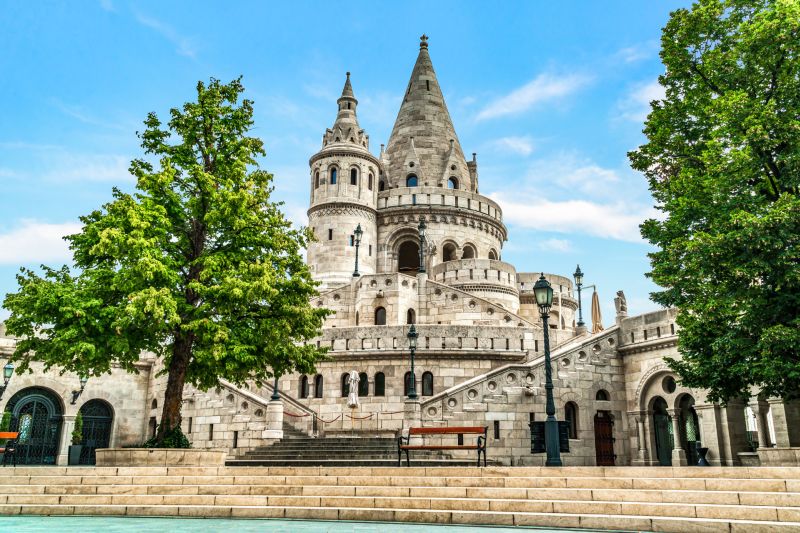
- Matthias Church – what attracts the attention of walkers is certainly a beautiful, colorful roof. Entrance to both the church and its tower is paid. The origins of the building date back to the 13th century. It is called the Coronation Church of Buda because it was the place of coronations and royal weddings. It is located at the Trinity Square, on which there is the Holy Trinity Statue (erected with the intention of ending the plague).
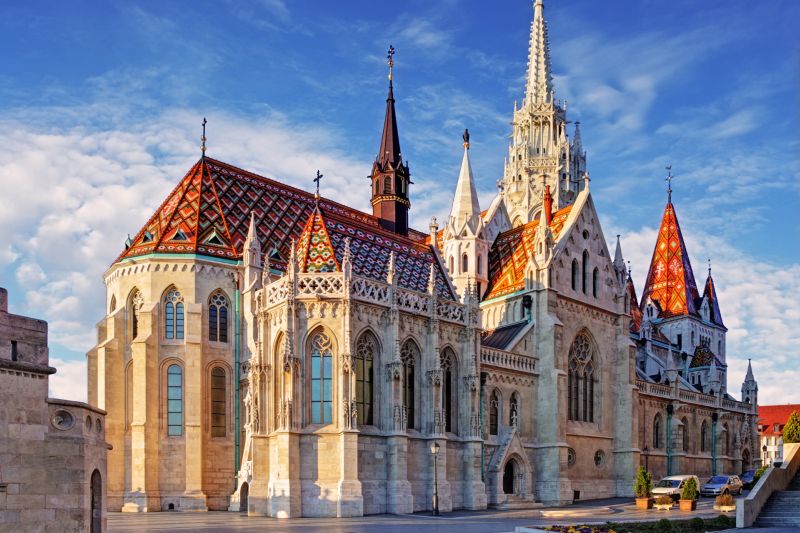
- Tower of the church of Mary Magdalene – the remains of the 13th-century church standing once in this place, destroyed during the bombing during World War II. Tourists can access the tower. The exposed foundations of the Gothic temple and the only preserved window make you realize its former grandeur and affect the imagination. It can be mentioned here that the Mary Magdalene Tower is not the only ruin protected and integrated into the landscape of the castle hill. The second is the former Dominican Monastery at the Hilton Hotel, close to the previously mentioned Matthias Church.
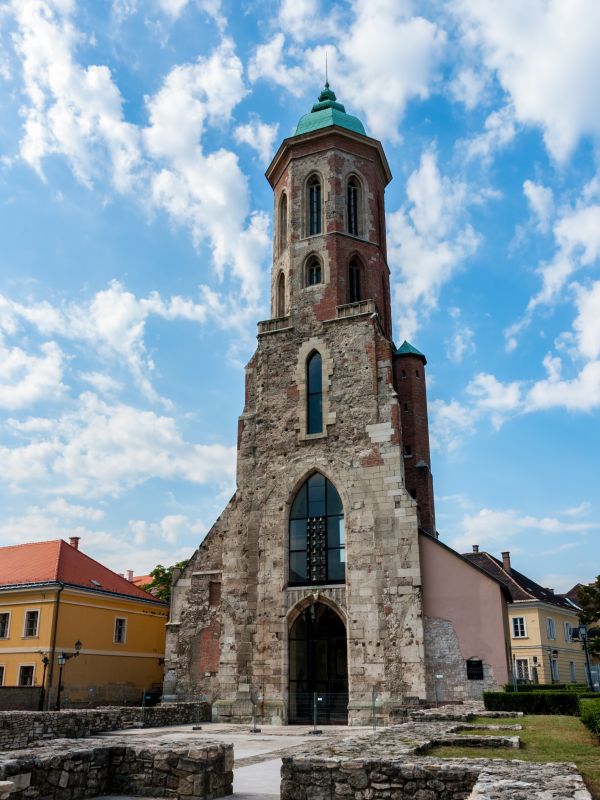
3. St. Stephen’s Basilica, Budapest
Budapest’s largest church was completed in 1905. Entry to the facility itself is free. A ticket, however, is required to visit the treasury and enter the dome (or take the elevator). The basilica holds the relic of the right hand of Saint King Stephen. Next to the basilica, there is a unique Gelarto Rosa ice cream shop, where ice cream is served in the form of a rose. Contrary to appearances, the employees are very skilled and the queue is moving very smoothly! The area abounds in pubs. It is easy to get to by metro (station: Bajcsy-Zsilinszky út). We are also a few steps away from the National Opera.
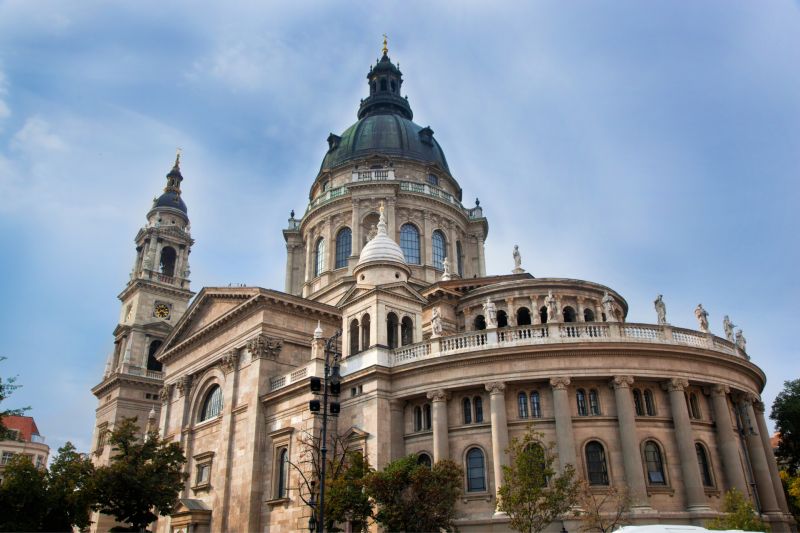
4. Margaret Island
A wonderful green area practically in the city center. Popular with the locals as well as the jogging enthusiasts. The island is located on the Danube. You can get down to it from the Margaret Bridge or the Arpad Bridge (each one is at its opposite end). If you like multimedia shows, you shouldn’t miss Musical Fountain. The shows take place from 11 to 20 every hour on the hour. You can admire them both during the day and after dark.
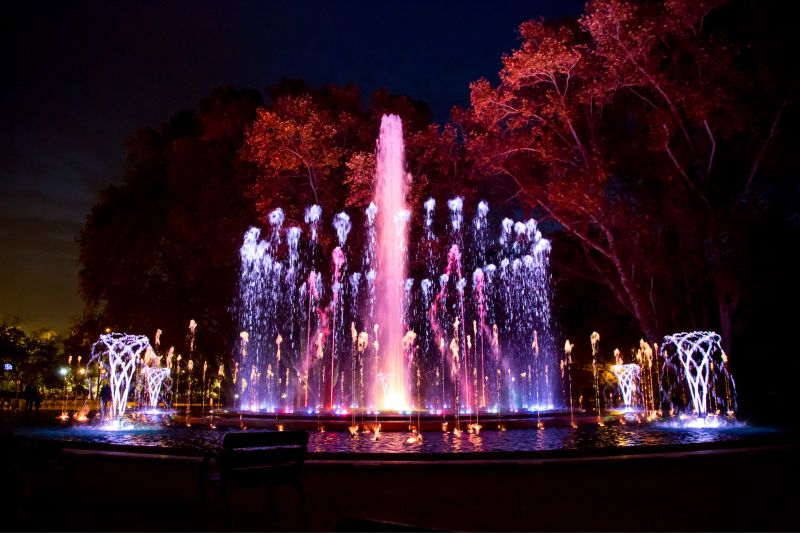
Along the entire length of the shore of the island, there is a jogging path. While walking, we can come across the ruins of the monastery and the church where the daughter of the Hungarian king, Margaret, spent most of her life. Besides, we can climb the Water Tower, sit on a bench in the Rose Garden or the Japanese Garden, visit a mini zoo, or splash in the Palatinus Baths. All this on foot or by renting a bicycle/melex.
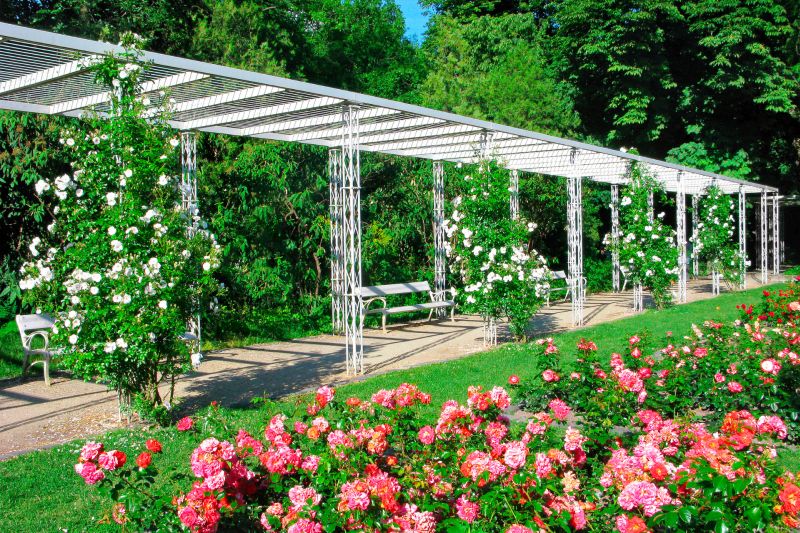
5. Baths, Budapest
Budapest is famous for its hot springs. Baths are one of the city’s most popular attractions, without which many tourists do not consider their visit to Budapest complete. In addition to the health benefits (over 130 thermal water intakes!), the thermal baths also provide aesthetic values. The buildings are beautifully decorated and finished. The most popular are:
- Szechenyi Baths – the largest and probably the most famous in Budapest. The complex consists of 21 pools and is situated in a picturesque area of a beautiful park and the Vajdahunyad Castle.
- Gellért Baths – the exclusive facility is located in a magnificent Art Nouveau building. They belong to the famous Gellért Hotel.
- Rudas Baths – their history dates back to 1560. An interesting option is the night entry on Fridays and Saturdays (until 4 a.m.). On the roof, there is a swimming pool under a glass dome. While swimming we have the opportunity to admire the night sky. They are located beside the Danube, under the Gellert Hill.
- Király Baths – A great place for history buffs. They have been in operation since 1565, and their decor is a journey through time. A very atmospheric place with unique architecture.
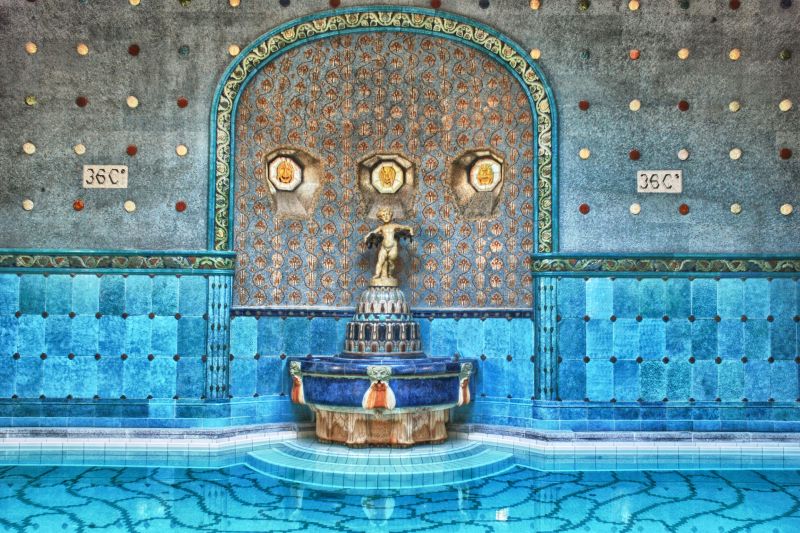
6. Heroes’ Square
On both sides of the square, there are impressive buildings: the Museum of Fine Arts (there are gems such as works of Leonardo da Vinci, Rembrandt, Raphael, and Rodin) and the Palace of Art (with temporary exhibitions). The most important element of the square, however, is the Millennium Monument (built to commemorate the 1000th anniversary of the Hungarian state). The central column is occupied by the archangel Gabriel. According to the legend, he appeared to the first king of Hungary, Stephen. On the pedestal are riders: Grand Prince Árpád and six of his chiefs. The whole is surrounded by a colonnade with figures important for the history of Hungary, ex. Saint Stephen, Louis I of Hungary, and Matthias Corvinus. The square has witnessed many political demonstrations in the history of the country.
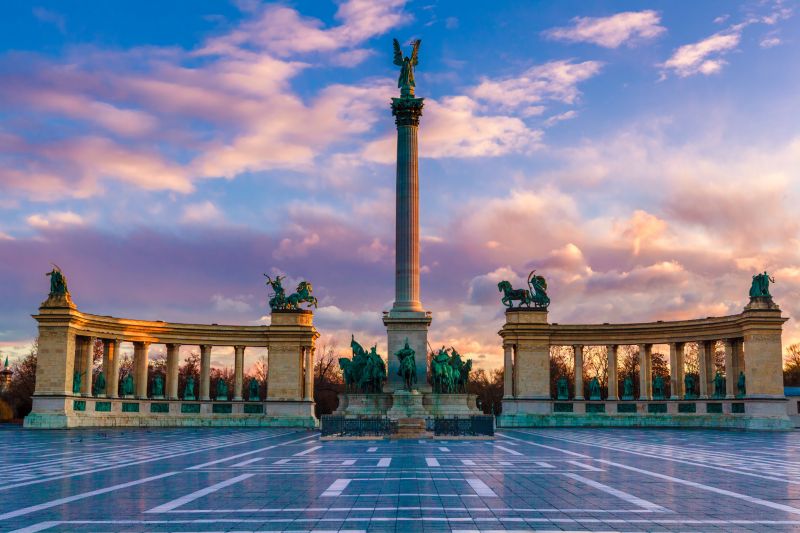
7. Vajdahunyad Castle
When walking behind Heroes’ Square, you cannot miss the huge park surrounding Vajdahunyad Castle. It is one of the most beautiful places in Budapest. The castle is fabulous and architecturally extraordinary. It was built combining the styles of different ages (Gothic, Renaissance, and Baroque). What’s even more surprising that it is often overlooked on the route of group coach tours. Book a few hours to walk around the grounds, you won’t regret it. Particularly interesting are the beautiful details, the rosettes, and the Statue of Anonymous (a Hungarian chronicler with an unknown name). The admission ticket is HUF 1,600 (about 4.45 EUR, inside the Museum of Hungarian Agriculture).
We can go boating on the adjacent lake. For those traveling with children, a visit to the ZOO (one of the oldest in the world!) or the Szechenyi Thermal Baths may be attractive.
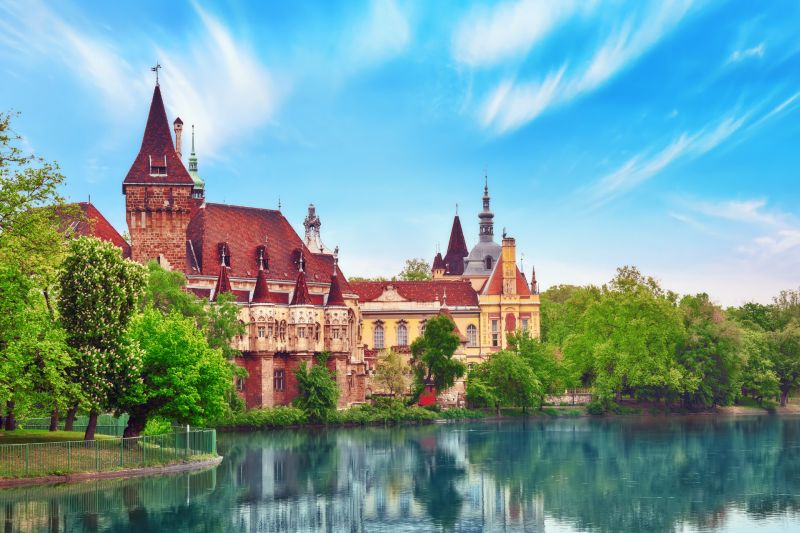
8. Gellért Hill and the Citadella
Very close to Castle Hill is the highest hill in the city (235 m). Bishop Gellert, to whom the hill owes its name, was murdered here by pagans (according to the legend, he was thrown from the top in a wooden barrel). At the top is the Citadella (closed to tourists) and the Liberty Statue. It is a great vantage point over the city. It is also a great place for relaxation. Overgrown with trees, with numerous paths, it gives a respite on hot days. At the foot, there is a beautiful waterfall that flows out at the Gellért Monument, and on the other side, the Rock (Cave) Church.
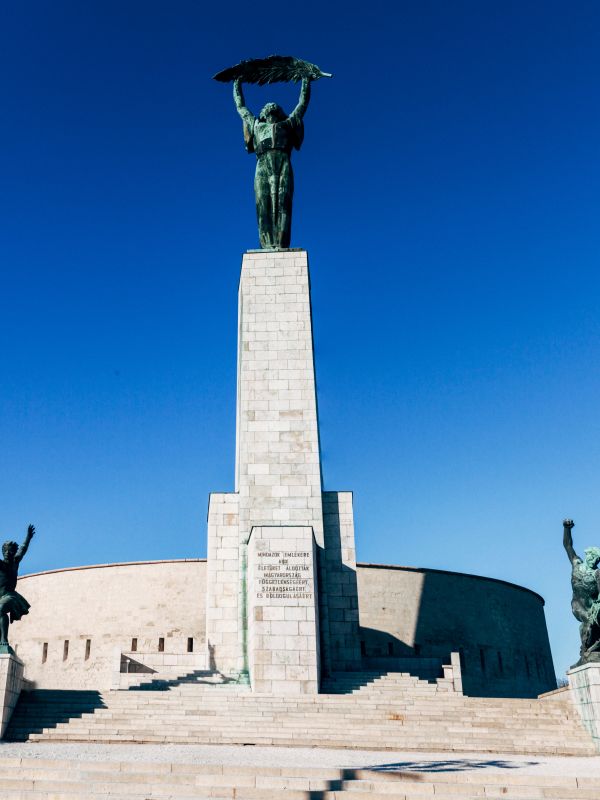
9. Central Market Hall (Vásárcsarnok), Budapest
This largest market hall (but not the only one!) is located right next to the Liberty Bridge, through which we will walk while descending Gellert Hill. Built at the end of the 19th century, it impresses with its size. On the ground floor there are vegetables, fruit, cold cuts (it is worth buying the famous Hungarian pepper, paprika paste or Tokaji wine). On the first floor there are bistros. Our testing of Hungarian cuisine should include such delicacies as lángos (deep-fried flatbread, most often served with cream and grated cheese), Hungarian goulash, or lecsó (letcho).
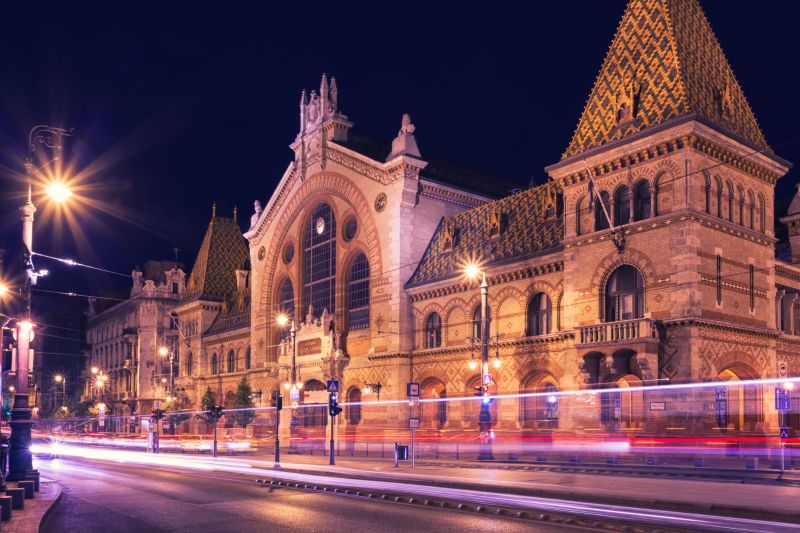
10. Aquincum (Óbuda), Budapest
In the district of Óbuda, which was once an independent city, there are ruins of the Roman city of Aquincum. According to available sources, over 40,000 inhabitants lived here. There are remains of amphitheaters, thermal baths, and residential buildings (eg. Hercules Villa with interesting mosaics; open from April 1 to October 31, Wednesday-Sunday; free admission). A small museum is also open to the public. We can take a suburban train to the remains of this ancient city (Aquincum station).
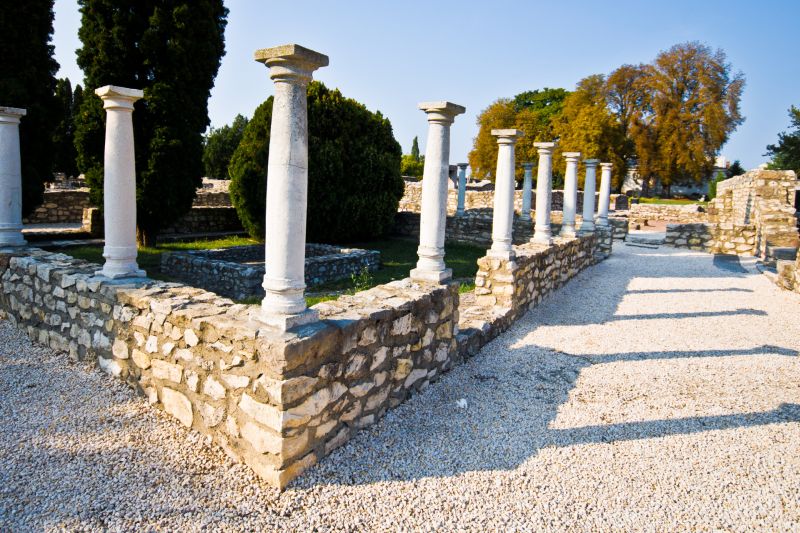
If you like my article about Budapest, I encourage you to read the other posts: Gozo, Malta, Milan, Seville, Prague.
I will be glad if you join me on Instagram – World of Blonde, thanks to which you will be up to date with all the news appearing on the website.